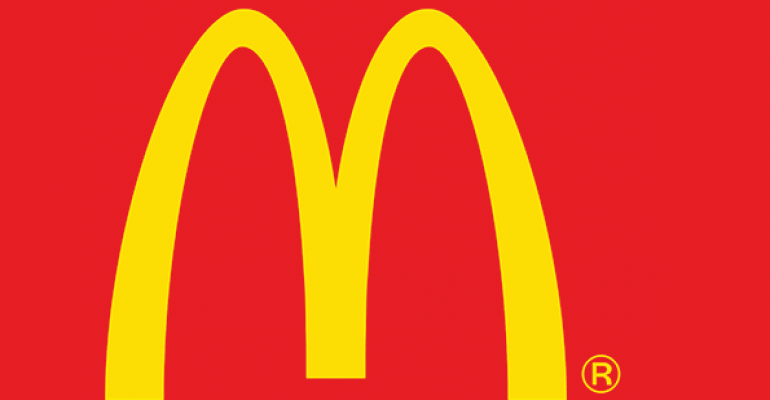At its Investor Day presentation this week, McDonald’s Corp. executives took investors and analysts and a few media members on a series of demonstrations that reveal what they see as the chain’s future.
Those demonstrations revealed a faster McDonald’s.
By the end of the year, McDonald’s customers will be able to order via an app and get their food at the curb. And many of them will be able to have their food delivered directly to their home.
McDonald’s plan would give customers the ability to choose whether they want to dine in, take out, go through the drive thru or have food brought out to their car. The chain’s mobile app would, theoretically, ease some congestion inside the drive thru. Its Experience of the Future would improve efficiency inside the restaurants.
And the company’s kitchen improvements could help operators serve more people during rush periods with the same staff. Delivery could serve people who don’t want to leave their house.
“McDonald’s is all about convenience,” said Lucy Brady, the Oak Brook, Ill.-based burger giant’s chief strategy officer.
McDonald’s has lost 500 million transactions since 2012, company executives said. And they believe most of those transactions came from core customers who simply opted for one of the chain’s primary, quick-service competitors more often over that time period.
Executives did not ignore value, or quality, as important strategies to regain these lost transactions.
Chris Kempczinski, president of McDonald’s USA, said that the company’s McPick value program had “too many” combinations that diluted the offering and hurt traffic. “We cannot drive sustained long-term growth without a strong national value program,” he said.
He also said, however, that overemphasizing value is “just a race to the bottom.” And so the company is working to improve its burger and chicken offerings. The company is testing a number of strategies to improve its burgers, including a fresh beef test.
“We’re evaluating everything about our core burger offerings,” Kempczinski said, noting that he is “very encouraged” about the results.
Yet the presentation demonstrated that McDonald’s executives want to leverage its biggest strength — its massive size — to get those customers back, and serve them more quickly.
In the restaurant business, you typically get a choice of having a lot of locations or high average unit volumes. But McDonald’s has both, with 14,000 locations that average about $2.5 million per unit. The combination makes it, by far, the single largest concept in the country.
“We get more people through our drive thru than our next four largest competitors combined,” CEO Steve Easterbrook said.
Speed was an issue for McDonald’s last year. On an earnings call in January, Easterbrook said that speed of service “declined slightly” in 2016. For a chain that has staked its claim as a major convenience player, that’s an issue.
The mobile app and curbside service, which will be introduced at the chain’s U.S. restaurants this year, could on their own help improve drive-thru times, particularly during busy periods. More than two-thirds of McDonald’s orders come through the drive-thru, making it vital for the chain’s performance.
Customers who order through the mobile app would need less time to make their orders at the drive-thru speaker. On its own, that could reduce drive-thru times.
Likewise, if more customers use that app and have their food delivered curbside, that could ease drive-thru lines as well.
In a simulation, the company said it could save 15 seconds per order if 20 percent of drive-thru customers ordered curbside instead and another 20 percent made their order via mobile.
That would give the drive-thru enough capacity for 20 more cars during that peak hour. “That helps support the business case for the investments we are making,” Easterbrook said.
McDonald’s also wants to rapidly roll out its Experience of the Future format into most of its restaurants by 2020. Experience of the Future restaurants feature kiosks where customers can get their orders and, in time, could provide table service.
For the most part, that’s about improving the experience inside the restaurants. But the kiosks could make the restaurants more efficient, speeding orders during peak times.
The company said early versions of the experience have generated a 4 percent to 8 percent sales lift, both from new customers curious about the kiosks and customers making larger orders.
To be sure, adding all of these different ordering points could be useless if the company can’t make the food fast enough. As one executive noted, Starbucks Corp. last quarter ran into problems when so many customers ordered via mobile that it crowded counters and drove some customers away.
Executives demonstrated a modular kitchen system that could be easily expanded to handle additional capacity in the same space, while employing the same number of workers to make the burgers and McMuffin sandwiches.
“We’re empowering technology, whether customers eat in, take out or go through the drive thru,” Easterbrook said. “We got a slow start. But we’ve made significant progress, especially in the last 12 months.”
Contact Jonathan Maze at [email protected]
Follow him on Twitter at @jonathanmaze

